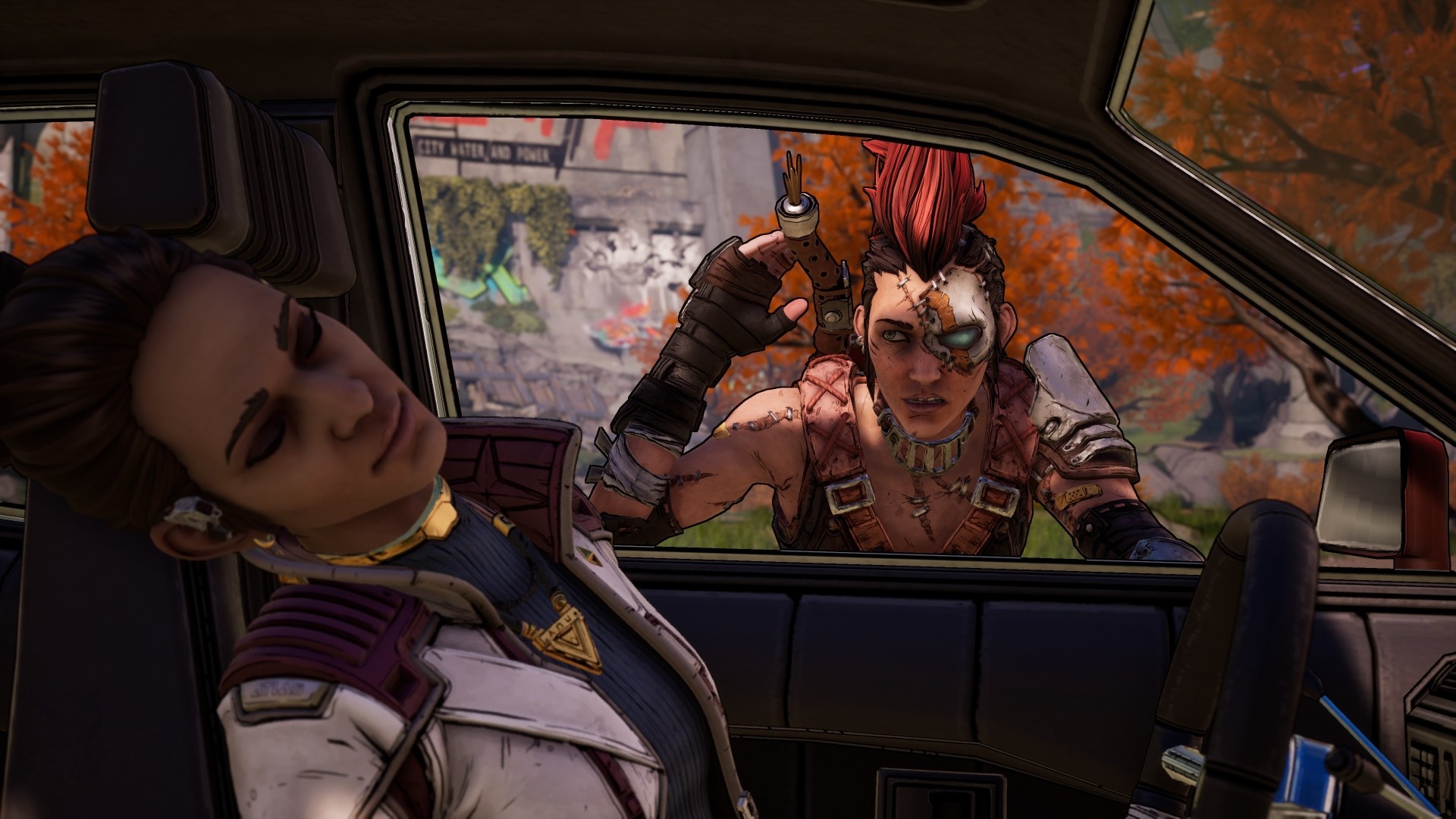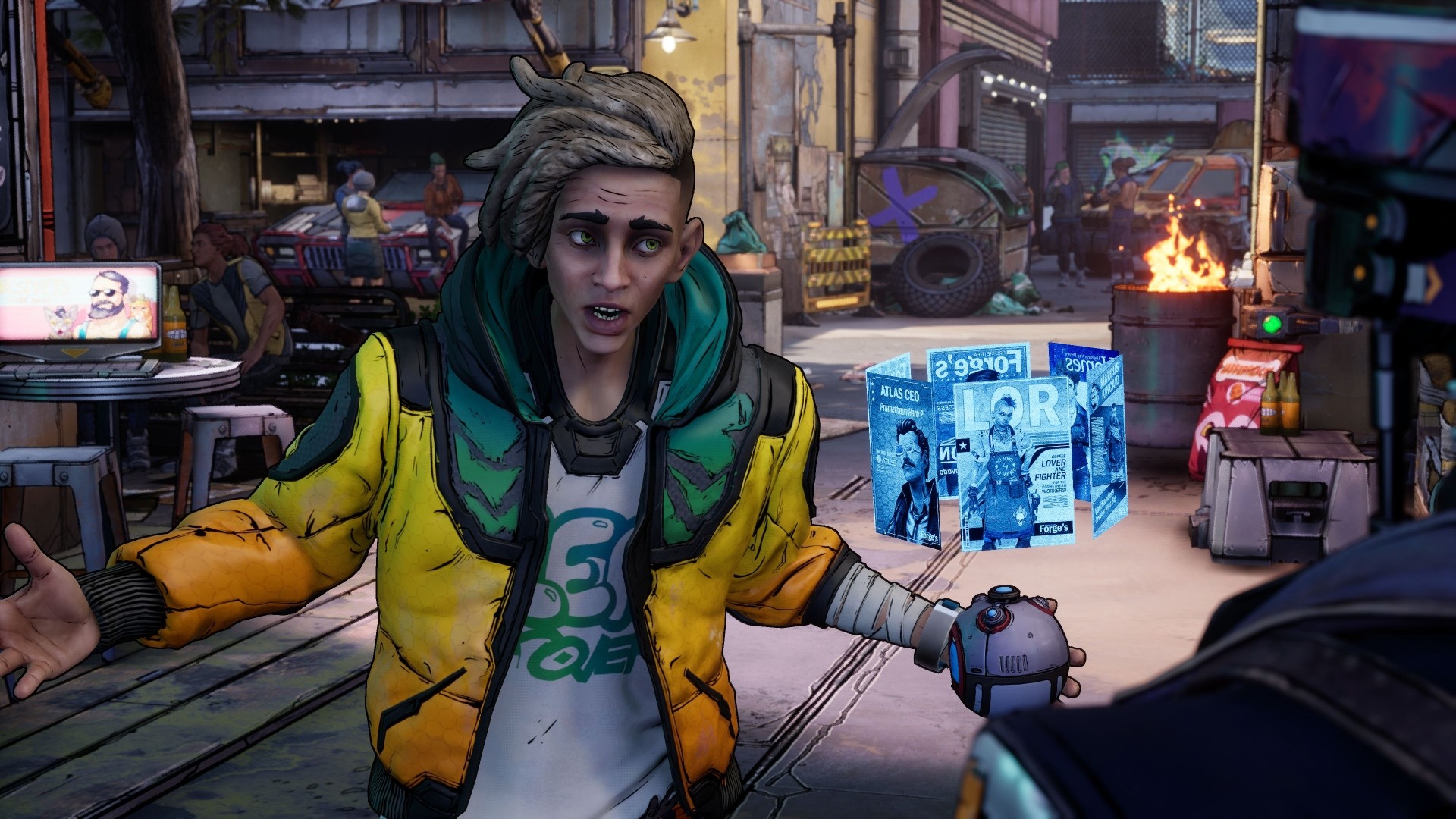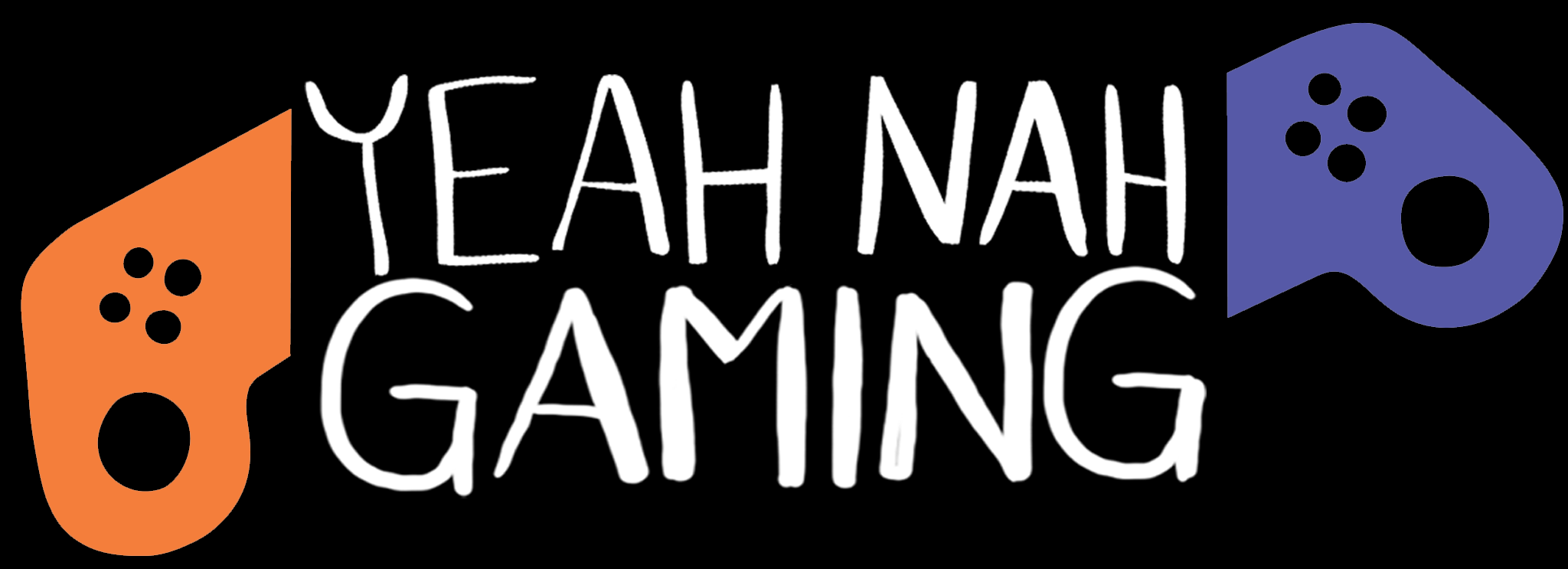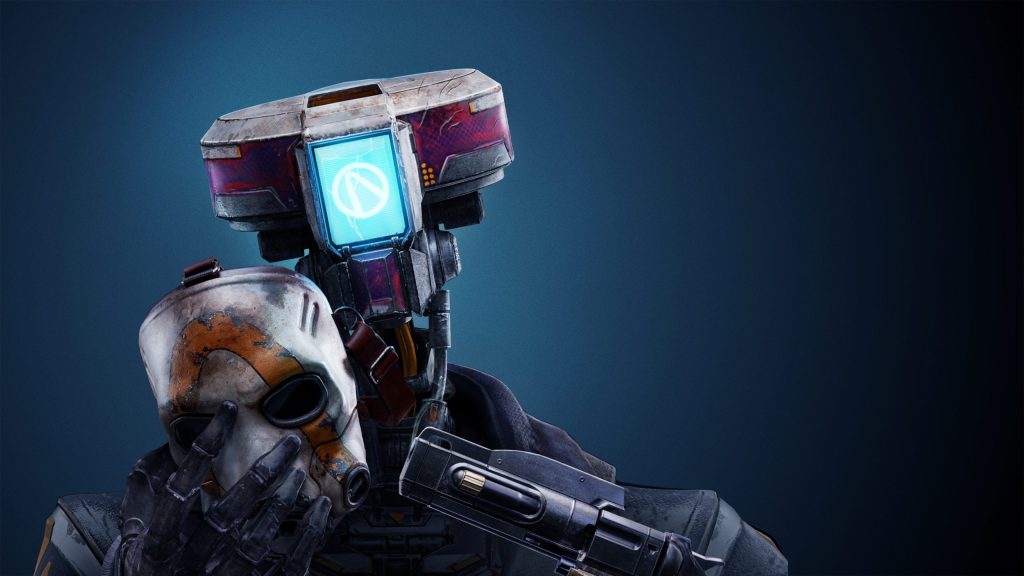Tales from the Borderlands was a quality game. The set pieces were brilliant and the characters were magnetically charismatic. It highlighted the exact strengths a narrative-driven experience needed to succeed and, crucially, established the tone needed to satisfy existing Borderlands fans as well as newcomers. This new sequel is devoid of those strengths and is instead a joyless, lengthy foray that I simply cannot recommend, even to the most hardcore fans of the franchise.
Before we begin, let’s establish two important points. Firstly, as established by the developers in the end credits and interviews, this was largely made during the pandemic, which resulted in a number of challenges and reduced their capacity to complete motion capture work. Secondly, New Tales doesn’t break any new ground in regard to its gameplay, meaning the entire experience is mostly composed of QTEs and a handful of sections where characters can be moved around relatively small environments, mostly to inspect items and access the ‘Quick Change’ kiosk, to change cosmetics if desired.

Neither of these things are a dealbreaker for me personally, especially the gameplay, as it’s standard fare for this genre: a trade off of sorts that allows for the more ambitious set pieces, extensive motion capture work, and deeper, branching stories that define these narrative-driven experiences. It does however mean that there is no gameplay depth to fall back on when the writing is not impressive. If the lack of interaction in narrative-driven games has been an issue for specific players before, this doesn’t do anything to appeal to that crowd. Similarly, those expecting returning faces from previous entries will be disappointed by the compact cast of characters here, although as we’re about to discuss, those fans should count themselves lucky that their favourites weren’t impacted by some less than favourable writing.
New Tales introduces a trio of new playable characters: a scientist Anu, her ‘entrepreneur’ brother Octavio, and frozen yoghurt shop manager Fran. To be blunt, these characters are neither likeable nor memorable nor sympathetic. The developers made the bizarre decision to tell a story about misfortunate business owners within a universe where walking guns, bandits and rampaging aliens are synonymous with everyday life. The story certainly takes its time (way too much of it, but more on that later) and there are attempts to tap into conflicts between characters to pry something resembling substance out of the narrative, however, for the most part, it fails to deliver anything meaningful or even remotely entertaining.

I am going to take this time to establish the specific issues I had with each character, starting off with Anu. As the brains of the three, she is responsible for the bulk of the exposition and is stuffed inside a comedic foil-shaped box for the majority of the story. The exception is when the gang is thrown into a high-pressure situation, which is when she becomes exceptionally nervous, stumbling around in a constant state of panic. Out of the three, I found her to be the most inoffensive but also the least intriguing, and her consistent panic attacks were seldom funny, though often grating. And to be clear, the material is to blame for the poor character work across the board, not the actors. Quite frankly, I am not sure Meryl Streep herself could deliver these lines convincingly. Anu’s dynamic with her brother Octavio is the closest New Tales comes to establishing something meaningful, as there are a handful of touching interactions where the estranged siblings attempt to reconcile. Even this dynamic is underdeveloped, as outside of the constant bickering between the two, valuable conversations are rare and this means their relationship isn’t advanced gradually, leading to its resolution feeling unearned, regardless of the player’s choices.
Octavio is the game’s collective issues blended into one character. His personality develops at a snail’s pace, his jokes are unfunny and he has no idea how to accomplish his goal of ascending the corporate ladder. He is constantly portrayed like a fool and a loser so unsurprisingly, it was difficult to swallow the pill that he was also a playable character, alongside Anu. I genuinely believe this game would have benefitted from having only one controllable protagonist, as it’s not as interesting to make decisions when you know you can directly influence how the other characters react, since you’re also playing as them. Finally, there’s Fran, who’s a middle-aged woman recovering from intermittent explosive disorder and a maternal figure of sorts to Octavio. Fran is arguably the worst of the bunch because her jokes aren’t just unfunny, they’re downright creepy at points. She has a running gag where she asks the others whether they need ‘mouth to mouth’ after they get hurt and eventually hires an unpaid male stripper as an intern. Her gameplay segments are also the weakest and there’s a couple of times where you have to complete QTEs to successfully make frozen yoghurt, which is about as dull as it sounds.

There are numerous moments throughout where the audience is supposed to feel sympathy for the cast, which is a tough ask when the personalities involved are so difficult to root for. I do feel a modicum of sympathy for the developers since, as mentioned in bold above, they were working with a reduced cast due to the pandemic. It doesn’t help that the narrative itself is a mess. It revolves around the trio building a business around a relic they find in episode two, while the Tediore corporation attempts to seize it from them. This is a ten-hour game that could have benefitted from being half or a quarter of its existing length. The pacing, especially in episodes three and four, is torturously slow. The story is relatively barebones and lacks depth beyond the simple premise outlined above.
It did, however, take insane, confounding turns at points and these only served to baffle me as to how spectacularly the narrative flew off the rails. A great example is in episode three, where a ridiculous amount of time is spent on the crew’s experience on a game show inspired by Shark Tank. This wasn’t a fresh direction, it was just bizarre and time consuming, followed by a resolution to the subplot that rendered it practically meaningless. There are also some supporting faces set up in episode one, who have laughably small roles in the story going forward. Whether this was an extension of the pandemic’s effect on development or not, they should have been removed if their purpose in the narrative started and ended within the first hour. This includes Rhys, one of the protagonists from the original Tales from the Borderlands, who has an extremely brief cameo that will undoubtedly anger fans of the first entry.

After completing the game, I could only think of two redeeming qualities. The first was the NPC L0U13. This assassin robot was the only likeable character in New Tales, bringing with him loads of charm and an interesting conflict regarding his internal programming, which he grapples with throughout the journey. His behaviour, like having to plug into a wall socket to charge or receive saucy ‘data packets’, makes for a handful of genuinely fun moments. Unfortunately, since he doesn’t receive as much screen time as the core trio, he can’t singlehandedly revive the experience, although his presence is thoroughly appreciated and his placement on the cover is deserved. The other glaring positive is the visuals. New Tales looks awesome. The colourful art direction, high quality assets, and sharp resolution combine to ensure the game looks gorgeous throughout. The character customisation is similarly excellent. What sets these skins apart is the attention to detail. Hair, makeup and even contact lenses can be altered depending on the skin, giving each one a unique feel and encouraging players to collect a variety of them.
Despite its impeccable art direction, New Tales from The Borderlands is ripped apart by its subpar, glacially paced narrative and miserably unlikeable ensemble.

